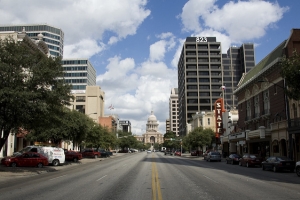Support migrant centric journalism today and donate

The number of new international graduate students enrolling in American universities appears to have increased slightly this autumn following three years of decline.
The figure rose 1 percent compared to a year ago, the Council of Graduate Schools says in a new report. Following the Sept. 11, 2001, attacks, the numbers fell 8 percent in 2002, 10 percent in 2003, and 3 percent in 2004.
Heath Brown, director of research and policy analysis at the CGS, said, "That's a positive sign. But we're certainly not rebounded to the pre-2002 levels."
Experts blamed the sudden drop in interest among international students in attending American graduate programs after the 2001-02 school year on a range of factors, from visa delays to anti-Americanism to sharper competition from universities in other countries.
The trend alarmed both university administrators and foreign policy-makers because universities depend on foreign students for teaching and research — especially in the sciences. The also were concerned because educating international students, who then return home with a positive, firsthand experience of America, is seen as an important foreign policy tool.
The survey, being officially released early Monday, represents only an initial report and complete figures will not be available until next year. But the 125 universities that responded represent most of the largest graduate programs.
Enrollment of students from China and India — the two largest sources of American students overall — rose 3 percent each. Enrollment from Middle Eastern countries rose 11 percent, though the numbers from that region are still comparatively small.
The survey finds total international enrollment down 3 percent, a result the decline in new students over the last three years.
About 1.5 million graduate students were enrolled in American universities last year, according to CGS, of whom about 225,000 came from other countries.





















